Run Cycle
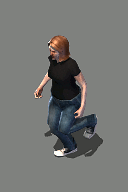
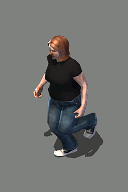
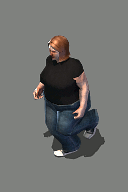
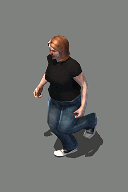
Although the three female models for Wandercall are very different sizes, they are able to use the same skeletal animation.




Although the three female models for Wandercall are very different sizes, they are able to use the same skeletal animation.
The new art assets use the more universal scale of 1 tile = 1 square meter. The pixel resolution of tiles depends on how we’re using them. Have a look at these different rendering scales.

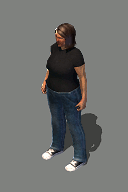


The scale of 256 pixels (as in, the base tile size is 256×128) is the upper limit for these new models. This scale could be used for equipment paper dolls, or could serve in a few years as the default size for 4X resolution displays.
128 pixels (the middle one above) is about the right size for our heroine when playing at or near 1080p.
64 pixels is near the size of current Flare alpha assets. This resolution is great for small screens (about 640×480) or low-power machines. If we reused these human models for an RTS game, this would be a good size for regular human units at 1080p.
32 pixels is about the lower limit of these assets. We’d use this scale when porting to 320×240 resolution (or smaller) devices.
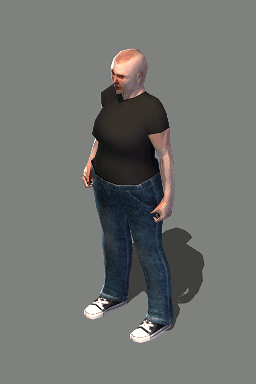
Another piece for this modern clothes set: classic canvas sneakers.
The art for Wandercall will have a significantly higher quality bar than Flare’s “Fantasy Core” set. Assets will require finished textures, normal maps, etc. to make use of the pixel density.
To get used to this new quality standard I decided to start by making something familiar: denim jeans. This lets me focus purely on the technical aspects and not worry about being creative at the same time. Here are the jeans at Wandercall’s default scale: 128×64 base tile size which represent a square meter.
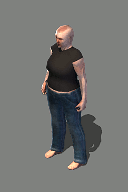
Here’s the 512px diffuse texture. The base denim texture is a public domain image. I painted the wear, edges, and folds in GIMP. The model also has a normal map baked from a pair of jeans with more details modeled in.
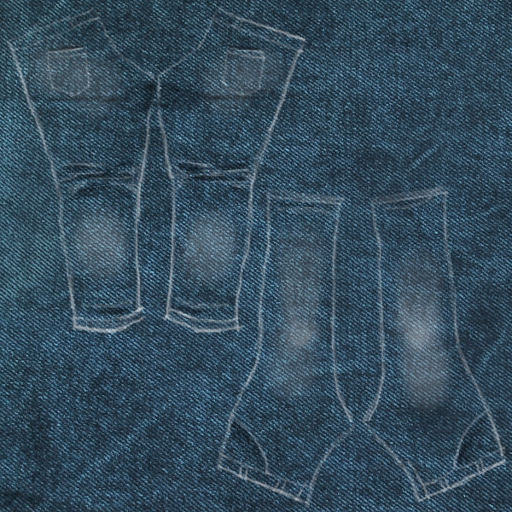
This scale should be just right for current HD resolutions. The art will hold up at double this size (e.g. for 4K displays). Here are the same jeans at 256×128 base tile size. I’ve fitted the jeans for the three sizes of models (US sizes 8, 16, 24).
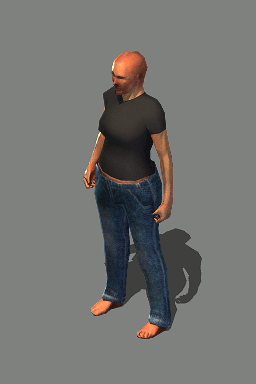

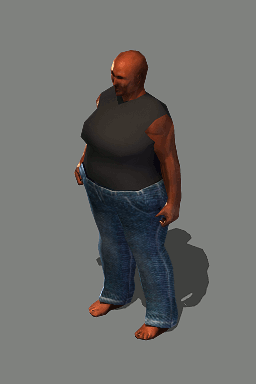
Why make modern clothes for a fantasy game? I don’t think Wandercall will be strictly medieval fantasy. I want to do some time bending and intentional anachronisms. The game world will have little physical or temporal cohesion; it will feel more like a dreamscape or afterlife.
Flare’s fantascyore art mostly represents my level of 3D skill as of a few years ago. To me it’s worth starting with a clean slate in Wandercall. Here’s Flare’s male hero wearing the starting cloth armor, rendered to the same scale as the images above.

Although the mesh resolution hasn’t changed much, the finish quality is drastically different. I made that Flare art about 4 years ago now; hopefully it’s evident that I’ve learned a lot since then.
If I’m going to keep making art at this resolution, there’s going to be diminishing returns as I get better with 3D. The art I’m making 4 years from now won’t be so drastically different? There’s only so much detail that can be squeezed out of a few pixels. This is comforting though. I want to settle into a style that won’t be obsolete soon. I’d like to be adding to the same set of assets for a few years to come.
The jeans took about 6 hours to make over two sessions. This is faster than I expected. I figured that moving on to more detailed art means that all assets take far longer to create. But I’m also getting more efficient and skilled with the tools. I guess I’m not making “programmer art” anymore.
Today’s the last day of June. My June project, SRS Archangelle, won’t be done in time. I’ve been a little burnt out lately and decided to slow down over the last week or so.
Even though I made and released games for that half year, some of them weren’t truly finished. Heroine Dusk has potential and I want to turn it into a full game for sale. The finished/inked version of Press Any Key To Live is only 20% done. These small projects turned into longer term commitments. Having tertiary projects is too much to juggle mentally.
So at the 6-month mark I’ve decided to waive the white flag. I won’t be doing a July game. I may return later in the year to make more monthly games, but for now I want to focus on my current projects. This includes Flare of course.
-Clint
Wandercall will use the Flare engine but will feature almost entirely new art. Here is a peek at the base female models. Players can choose their heroine’s size (small, medium, large) and skin tone (light, medium, dark). I’m also showing the WIP zombie/infected skin tone.
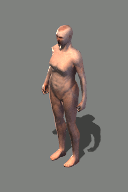
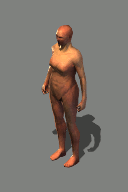

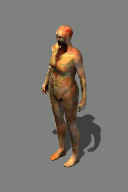






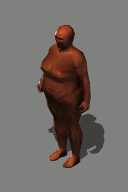
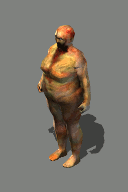
I’m using sizes here that are average for current industrialized nations. The models for these are US dress size 8 for small, 16 medium, and 24 for large.
I wonder: will people use the largest size? It would be great and inclusive if I support that size. I also know it’s an extra few hundred hours over the life of the project. For now I’m going for it. I’m hoping these options are close enough for most people sized 0 to 30 to make a character like themselves.
PS: I hired awesome friends to model for these three body shapes. They all lead physically active lifestyles: one enjoys nature hikes, one plays roller derby, and one is a burlesque dancer.
Lately we’ve added some powerful, flexible options for running Flare games. But it could make building and running complex. So we’ve added some basic instructions to the Flare-game README.
The Simplest Setup
If you are building and running Flare Game from source, this is the simplest way to get started on all operating systems. Here you build and play Flare in a local folder instead of installing it to a standard OS folder (e.g. /usr/local or Program Files).
- Clone the flare-engine repo and build the executable.
- Clone the flare-game repo into your user directory.
- Put the flare executable inside the flare-game folder
- The executable and the “mods” folder should be in the same directory
- Run Flare
Dorkster also wrote up new instructions for Building and Running on Linux.
If you get stuck let us know — we’re still looking for ways to improve this. And if you know a lot about building/packaging and know ways for us to automate these steps, please open a discussion issue about it.
Wandercall — when the fates curse someone to leave their home and go on an adventure.
My April One Game A Month game is complete! It’s called Heroine Dusk. The sun hasn’t risen in days and creatures are swarming towards human civilization. You’re a serf who takes up arms agains the darkness.
I recently approved code (contributed by Ryan Dansie) that adds basic Minions support in Flare. This will allow Flare games to have summonable creatures, tamed enemies, or simple allies.
This may be the last major new game feature I approve for Flare 1.0. Wow!
Not to say that we won’t be adding/improving features. One of our major goals probably for version 0.20 is making all the menus work fully on systems with no mouse/pointer. And there will be smaller game features that make it in, but those will mostly be expanding existing features — like adding new item bonus types, or adding new spell types.
But the bulk of the remaining code work for 1.0 is cleanup. Refactoring some parts to make more sense. Hardening input file handling and adding more helpful error logs. Naming and comment consistency. That kind of thing.